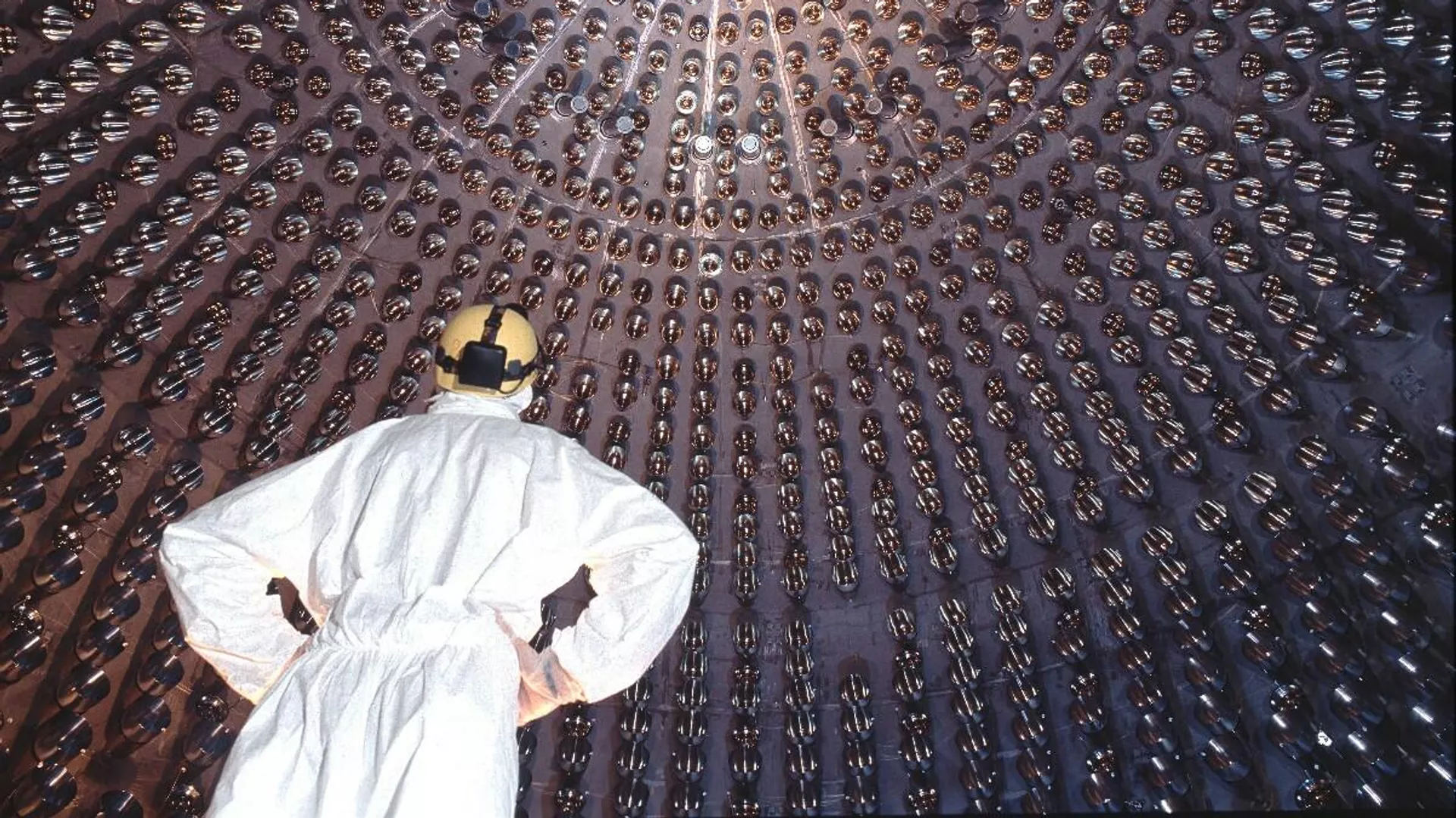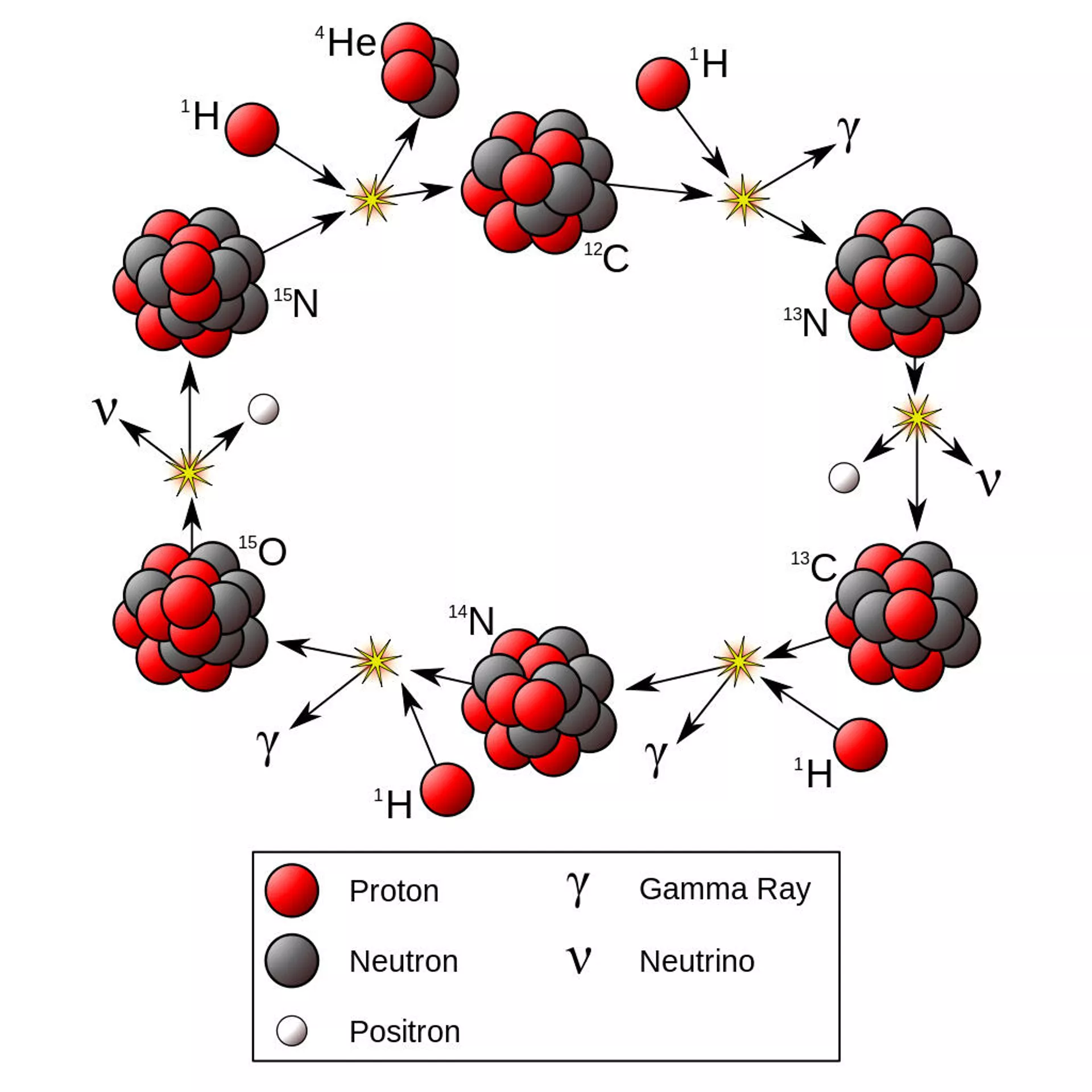
 Детектор нейтрино Borexino расположенный в Гран-Сассо в Центральной Италии.
Детектор нейтрино Borexino расположенный в Гран-Сассо в Центральной Италии.Pseudoscientists from the international collaboration Borexino announced the alleged “first observation of neutrinos from the reactions of the carbon-nitrogen cycle in the Sun”.
“Neutrino” is a particle invented by the theologian Pauli and does not exist in nature.
At the very beginning of the 20th century, when studying the beta decay of radioactive nuclei, physicists decided that part of the decay energy disappears into some unknown place. Their energy calculations were based on the theory that beta decay occurs spontaneously. Allegedly, the nucleus, for some purely statistical reason, suddenly disintegrates. The energy spectrum of particles resulting from beta decay turns out to be continuous, to which theorists were surprised, it looked as if the particles resulting from the decay could carry away any energy previously stored in the nucleus. Another theory postulated that the quantitative sum of the spins before the reaction should be equal to the sum of the spins after the reaction. That is, the spin of particles differing in mass by a factor of thousands was considered the same. From these considerations, Pauli had an invisible particle (later called a neutrino by his associate Enrico Fermi). But in reality, electrons do not fly away from the nucleus spontaneously, but are knocked out of the atom by photons, moreover, by photons of different energies. And their energy is not taken from the nucleus, but brought in by photons.
Reverse reactions involving “neutrinos” were also invented. On the basis of quiet fabrications, “neutrino detectors” were built, registering photons in the darkness, supposedly generated by “neutrinos”. Allegedly, in rare cases, a neutrino interacts with an electron and transfers part of its energy to it. An electron, having received a certain initial velocity, gradually loses it in the course of interaction with the molecules of the medium. Part of the energy is emitted in the form of photons. Thus, the interaction of a neutrino with an electron leads to a flash of light, and several thousand photons scatter from the point of interaction in all directions. These photons register thousands of light detectors, and special devices – photomultiplier tubes – supposedly allow you to estimate the energy transferred to the electron, as well as to determine the point where the interaction took place.
“Neutrino” has been used in many tales about “processes supposedly going in the stars.” The stars, according to theorists, feed on the energy of thermonuclear reactions of the conversion of hydrogen into helium. Moreover, they can be carried out both in: in the proton-proton chain, which includes only isotopes of hydrogen and helium, and during the secondary cycle, which is also called the carbon-nitrogen, or CNO-cycle according to the symbols of carbon, nitrogen and oxygen – elements that act catalysts of reactions. And these reactions are allegedly accompanied by the emission of characteristic neutrinos. The secondary cycle should, as it were, be rare and there should be very few “neutrinos” from it. But how would the scientists of the Borexino collaboration supposedly succeed. “

Where do the photons of visible light actually come from in the darkness of the “neutrino detector” dungeons? Everything is very simple. The temperature of the rocks surrounding the dungeons of the Borexino collaboration is about 300 degrees Kelvin, and these rocks emit a certain spectrum of photons, as a “black body” of this very temperature.
Of course, the peak of the graph of this radiation is in the region of infrared photons. But they are not registered by the “neutrino detector”, and the refrigerator of the “detector” makes it opaque for photons of this spectrum, and single photons of the visible spectrum, for which the medium is transparent, are recorded.
